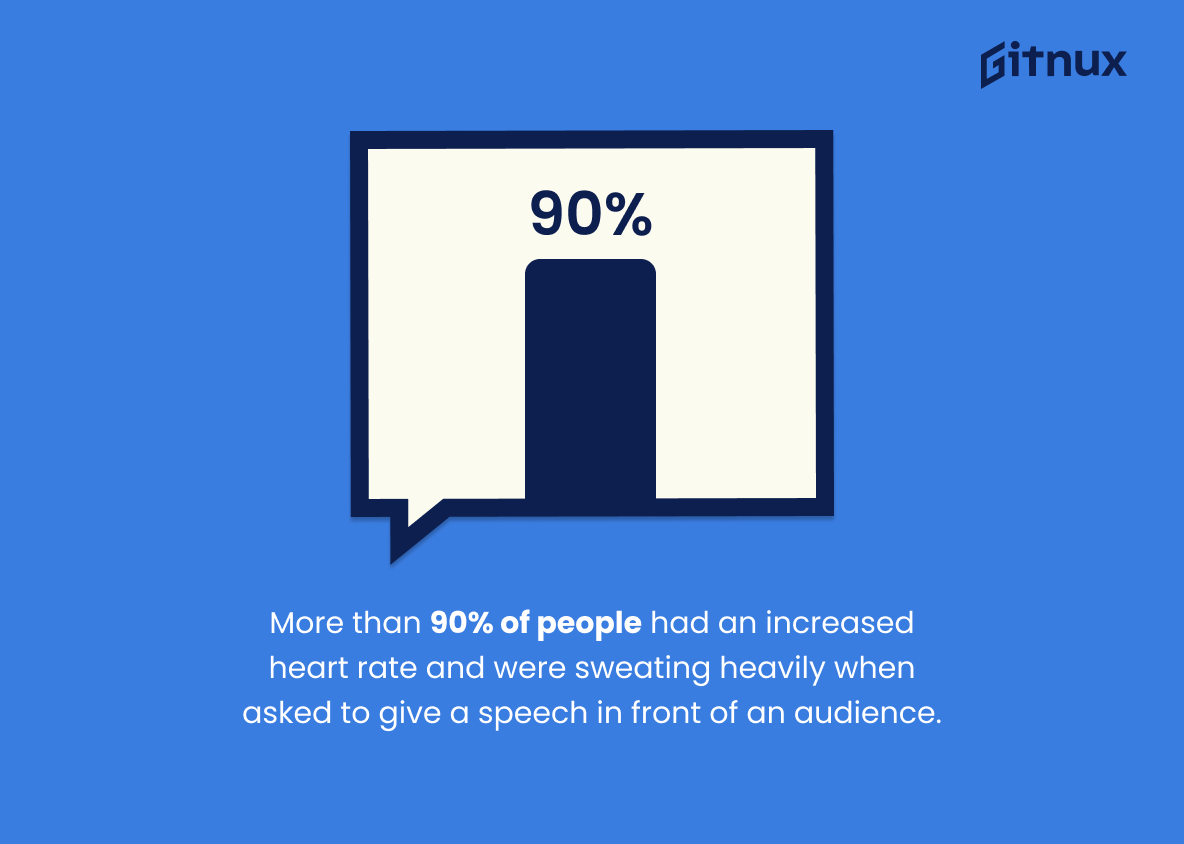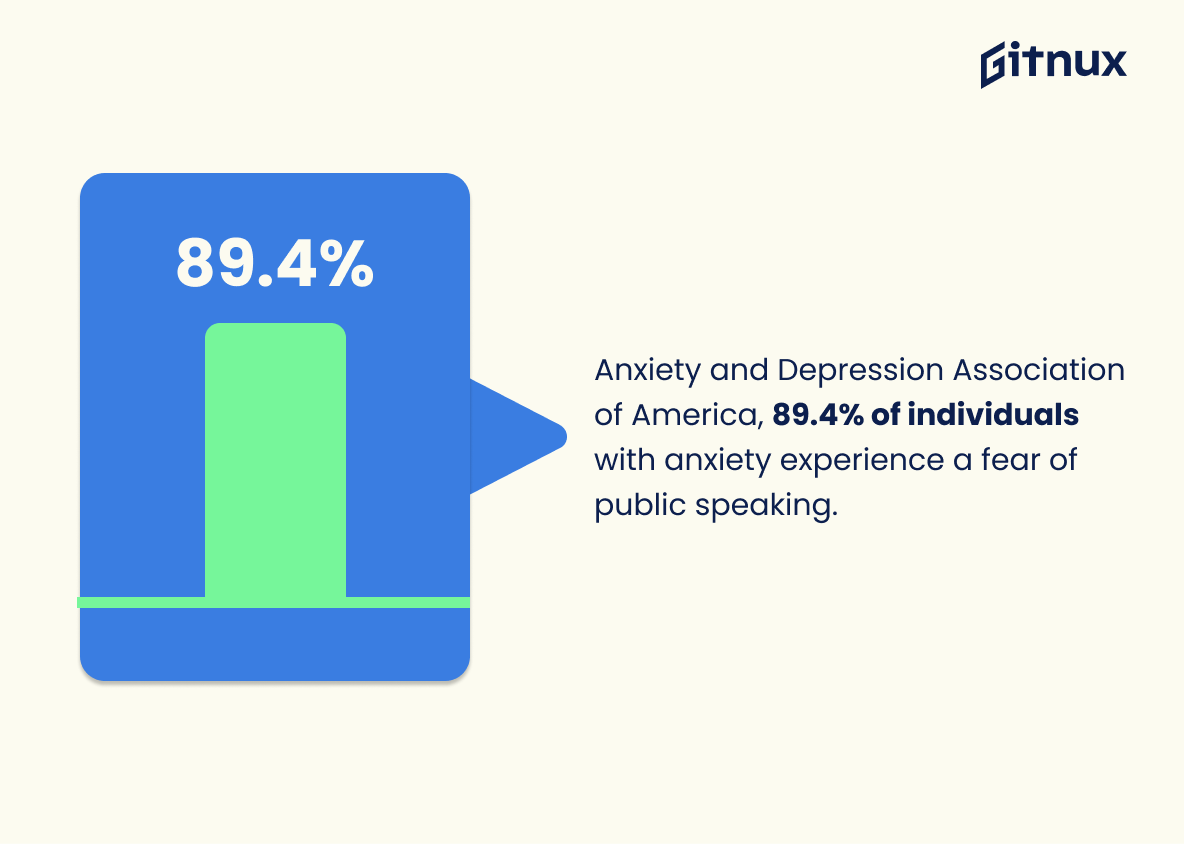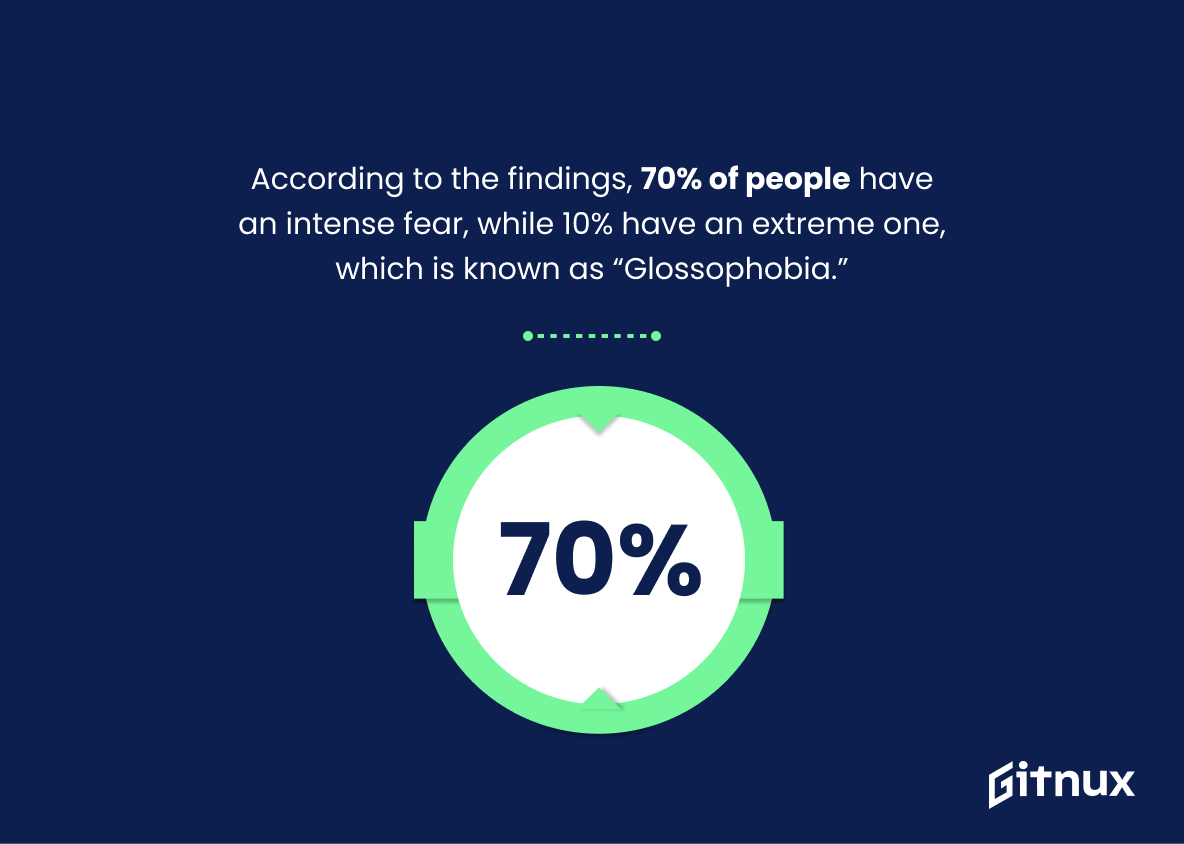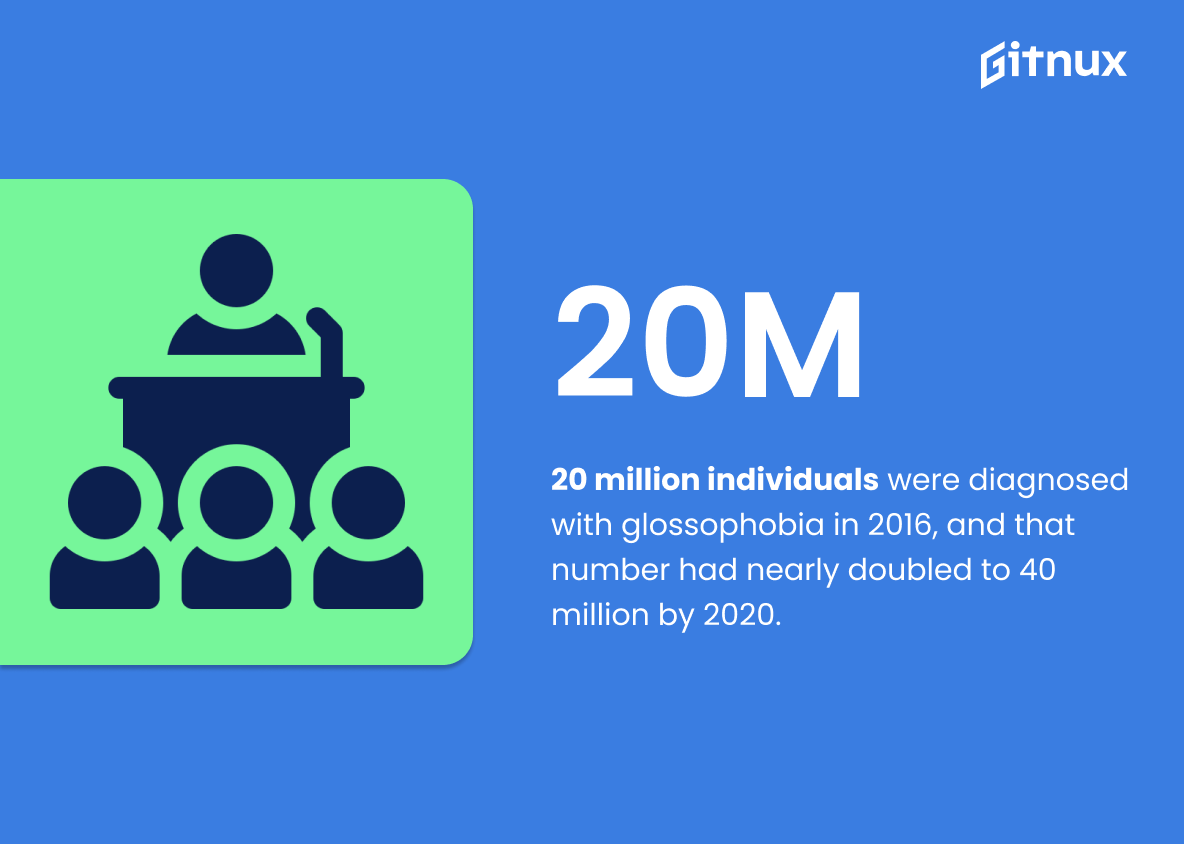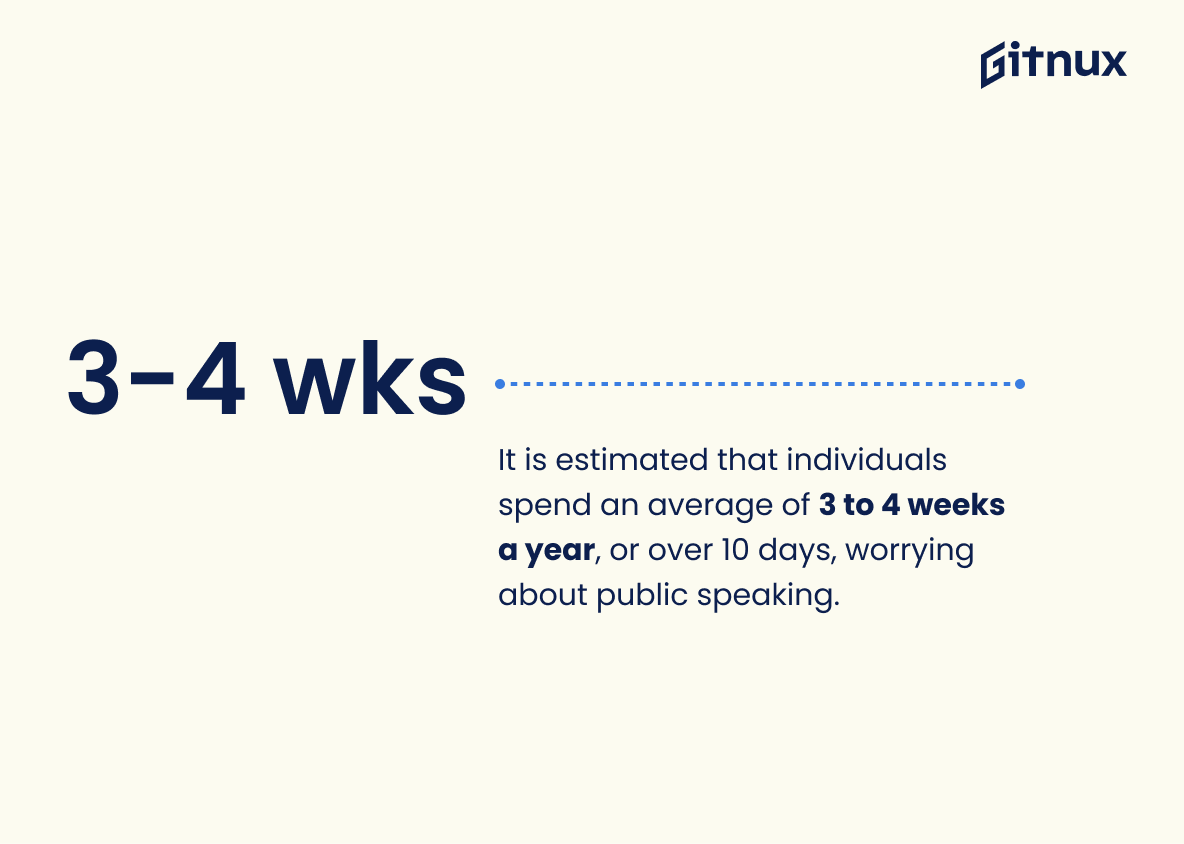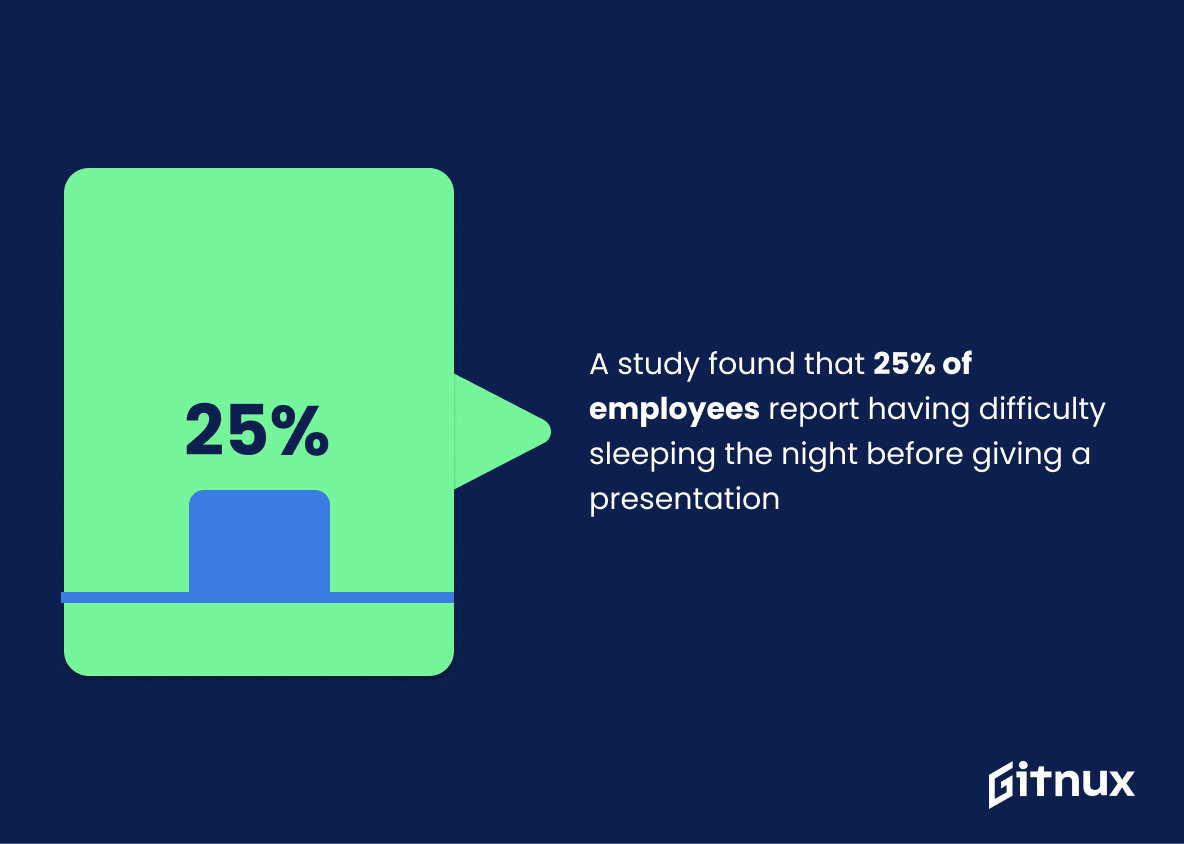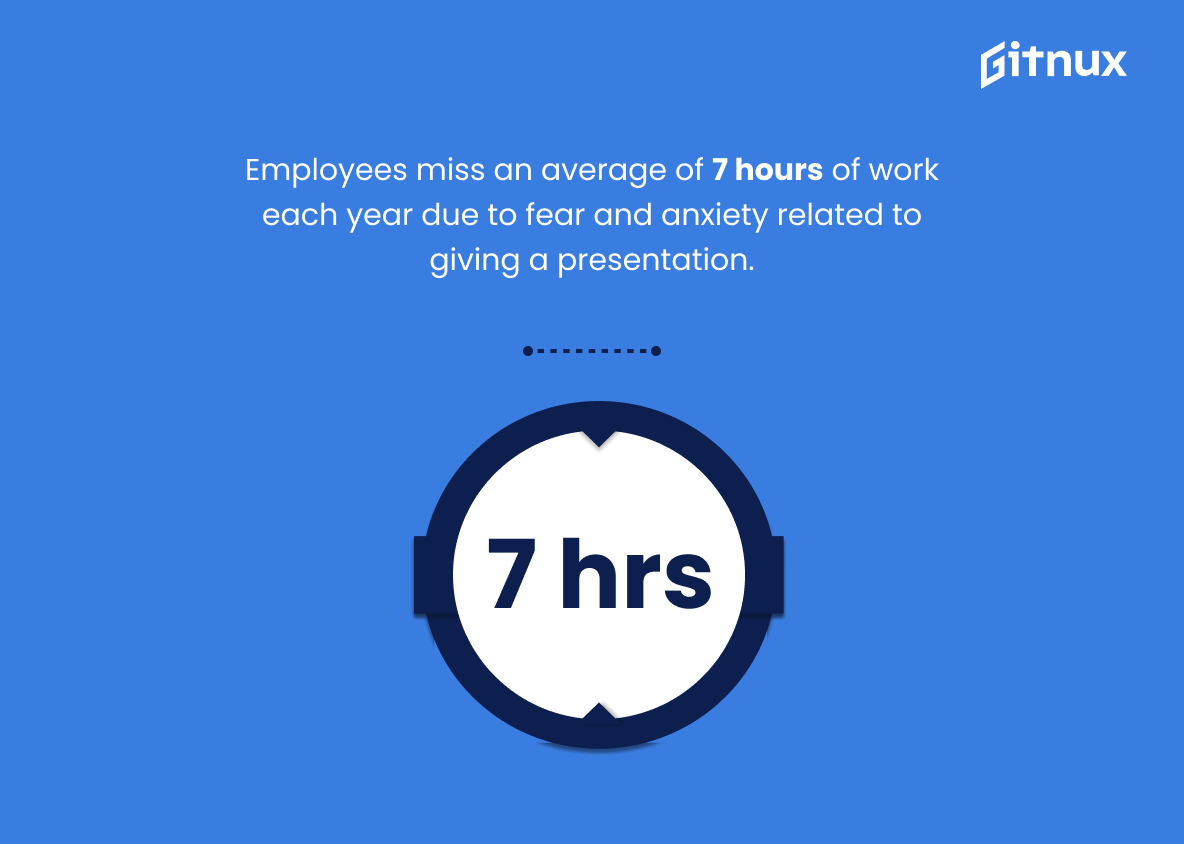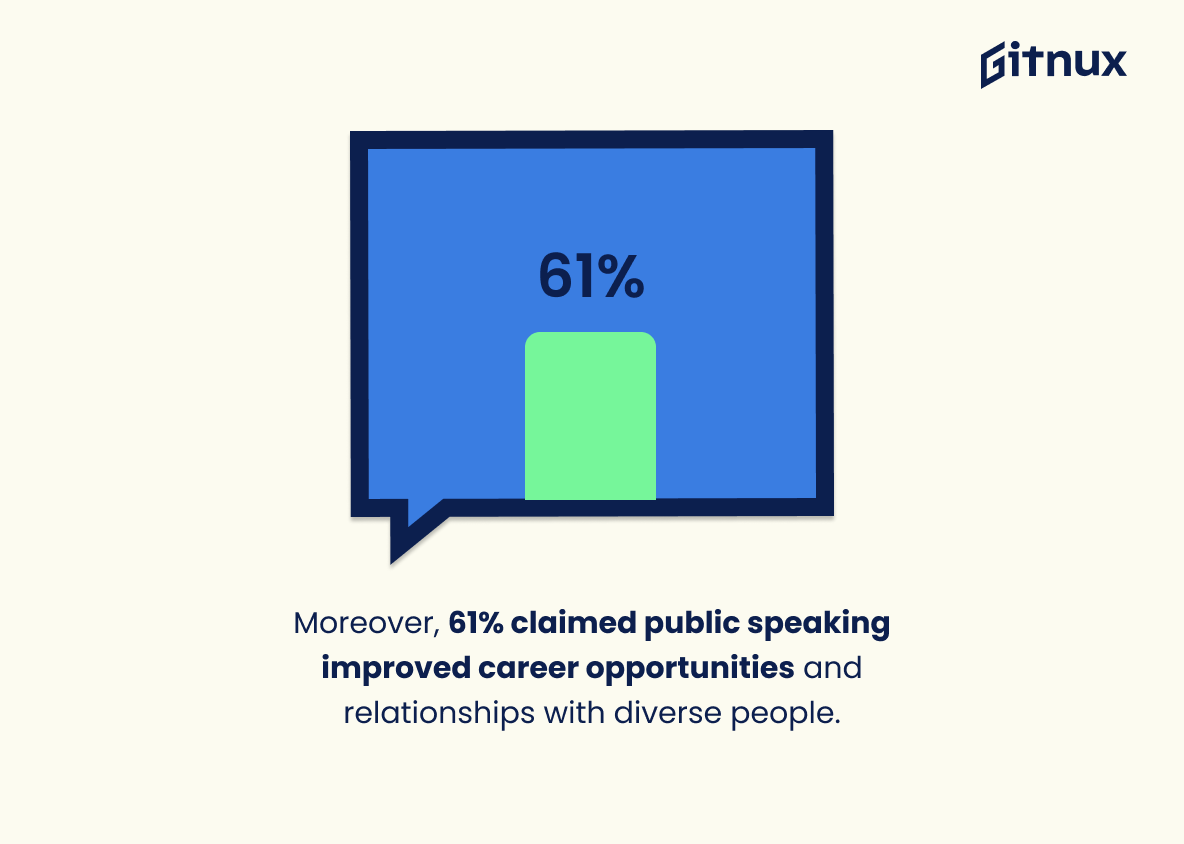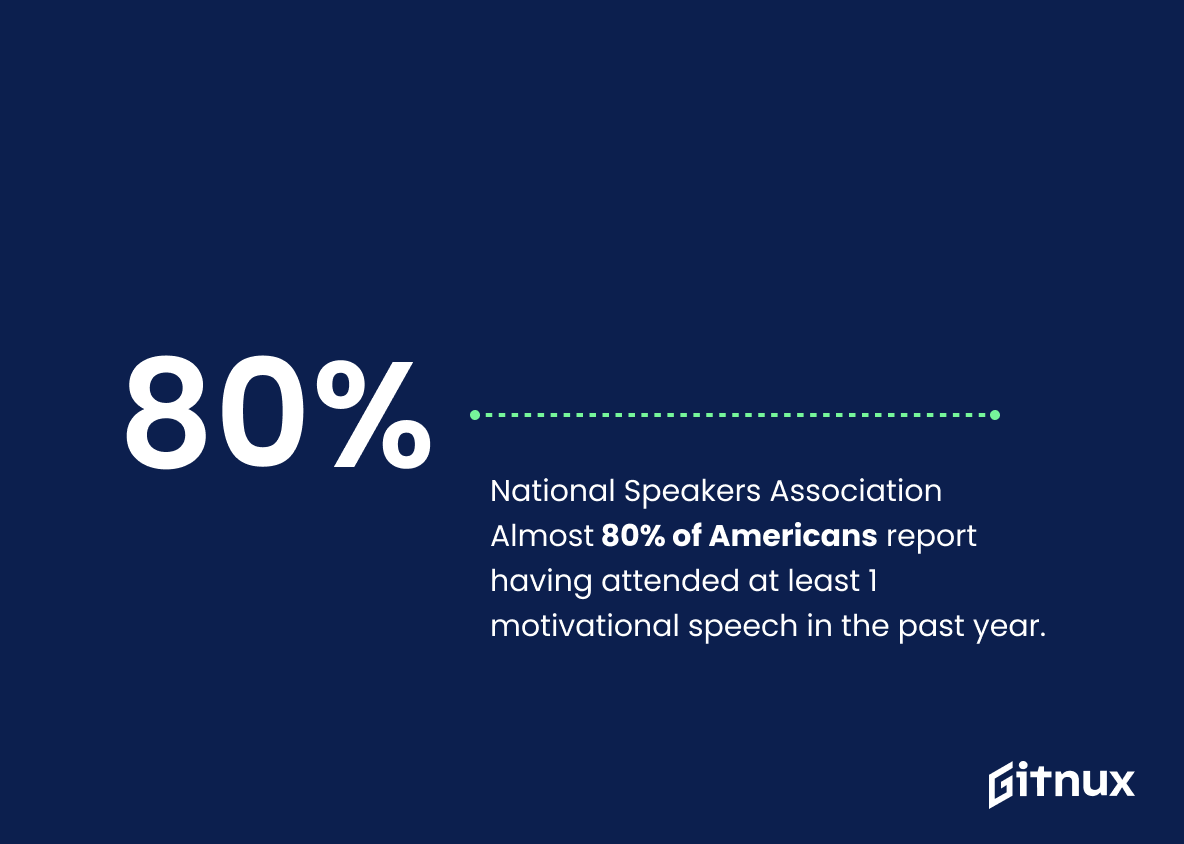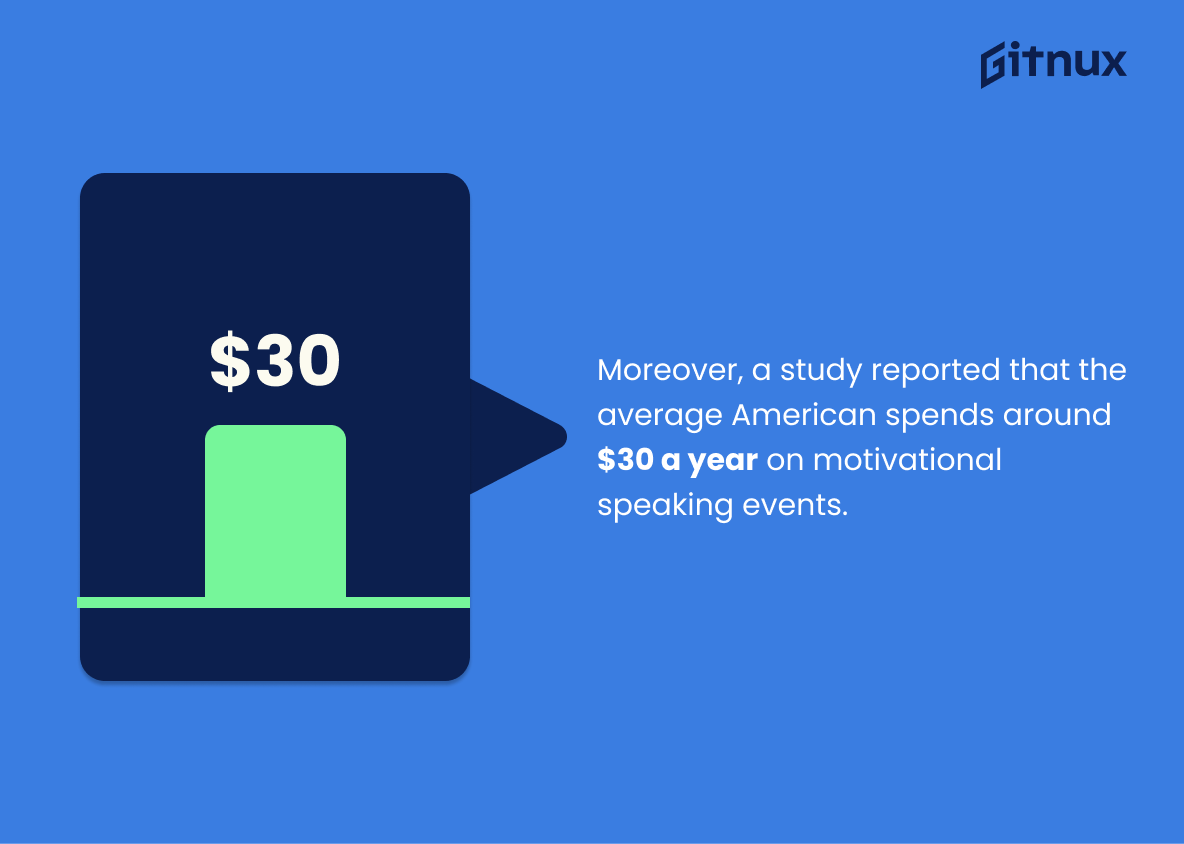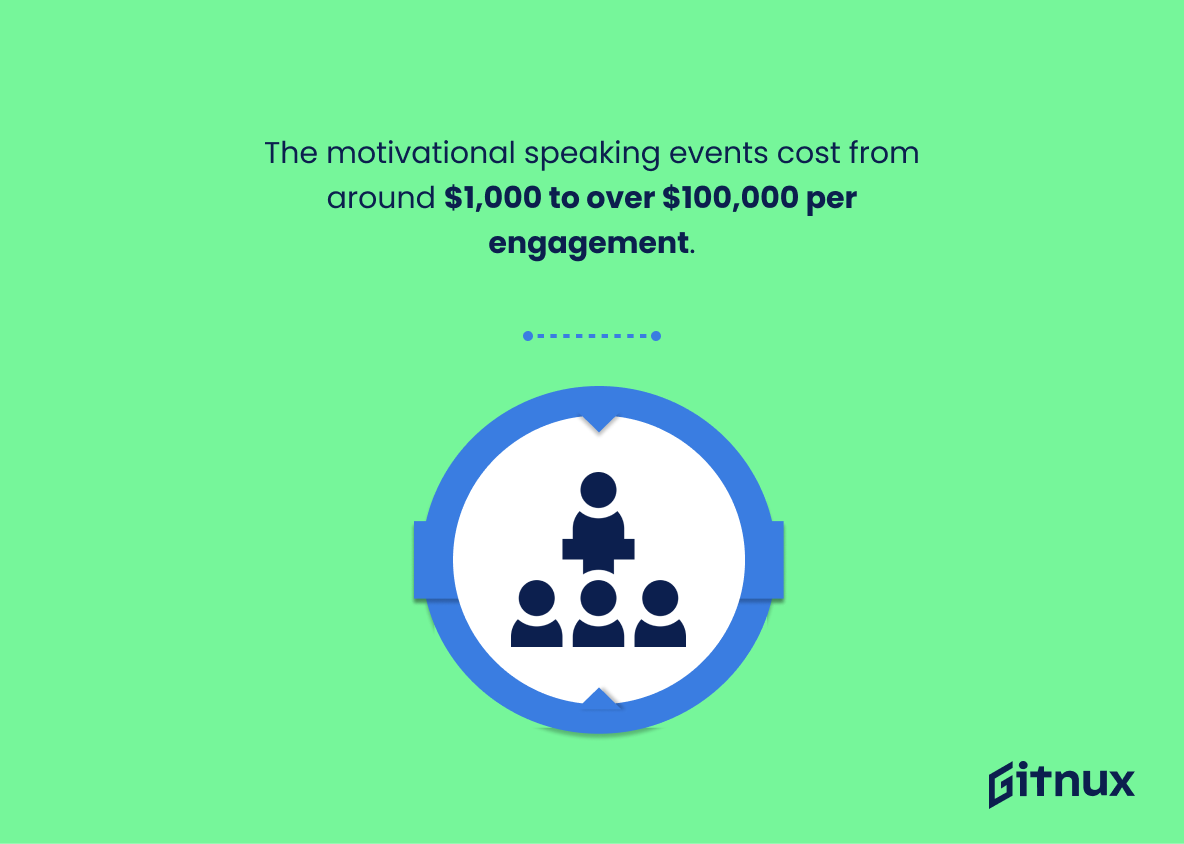Public speaking has a long history, going back to ancient times when it was used to inform, entertain, and persuade audiences. In the modern age, based on public speaking statistics, it is still a vital skill and has been embraced by business, education, and politics, to name a few. People who can effectively communicate their ideas through public speaking have a tremendous advantage in both their career and personal lives.
Nevertheless, there are still many who struggle with their public speaking abilities, whether due to fear, a lack of confidence, or inadequate preparation.
To better understand its importance, its value, the phobia that may arise, and its solutions, you must take a closer look at our article that outlines public speaking statistics and demonstrates how much of an impact it can make.
Public Speaking: The Most Important Statistics
89.4% of people with social anxiety conditions had a fear of speaking publicly.
61% claimed that public speaking improved their career opportunities.
Public Speaking General Statistics
More than 75% of 2020 study respondents acknowledged experiencing anxiety when required to speak in front of a sizable group.
This statistic is further corroborated by an online survey conducted by the National Speech Anxiety Institute, which found that 95% of those surveyed indicated some level of fear when giving a speech.
Another survey revealed that only 43% of people felt that they could give a good speech in front of such a group.
More than 90% of people had an increased heart rate and were sweating heavily when asked to give a speech in front of an audience, making it one of the most common phobias.
Moreover, close to 60% of those surveyed revealed that they felt more comfortable speaking in a smaller, more intimate setting.
Further, close to 70% of people said that they experienced a great sense of relief when the speech was over, but many also felt proud that they had pushed through and conquered their fear.
These results are unsurprising, as public speaking can be a very intimidating experience.
Public Speaking Fear Statistics
The fear of public speaking is not only a common phenomenon but also pervasive.
It has been reported by the Anxiety and Depression Association of America that 89.4% of people with anxiety are most likely to suffer from a fear of public speaking.
Another survey conducted in the United States found that 74% of people have some degree of anxiety when it comes to this matter, with around 15 million individuals dealing with the fear of public speaking on a daily basis. Additionally, it can vary from light to severe.
According to the findings, 70% of people have an intense fear, while 10% have an extreme one, which is known as “Glossophobia.”
Younger generations are more likely to have this phobia, with 84% of those between the ages of 18 and 34 admitting some level of nervousness while giving a speech in front of an audience.
Further, 20 million individuals were diagnosed with glossophobia in 2016, and that number had nearly doubled to 40 million by 2020.
A survey also revealed that women are more likely than men to have public speaking anxiety, with a 2:1 ratio.
44% of women and 37% of men reported feeling anxious and afraid about speaking in front of an audience.
This fear is most prevalent in low-income communities, with 86% of those making less than $50.000 a year reporting an intense fear of speaking in public.
Further, it is estimated that individuals spend an average of 3 to 4 weeks a year, or over 10 days, worrying about public speaking.
With these huge numbers, only 8% of those with a public speaking phobia are reaching out for professional help, despite the fact that the fear can significantly reduce one’s ability to earn a living wage.
Public Speaking Statistics in the Workplace
Even in the workplace, where public speaking is essential for negotiations, and business dealings, many people avoid engaging in these activities due to
A study found that 25% of employees report having difficulty sleeping the night before giving a presentation, while another 25% reported feeling nauseous or having other physical symptoms associated with stress.
Another study reported that employers estimate that their organizations lose up to $375 million a year due to employees’ fear of public speaking.
Employees miss an average of 7 hours of work each year due to fear and anxiety related to giving a presentation.
Furthermore, to mitigate the effects of public speaking phobia, employers spend an estimated $1 billion per year on communication training to make their employees feel more at ease.
Benefits of Public Speaking
Despite the debilitating fear of public speaking, research has shown that it can have many positive benefits.
A survey of over 1,000 people revealed that the majority of respondents felt more confident in their communication skills and leadership abilities after having engaged in public speaking.
The same study reported that 45% of those surveyed felt that their speaking experiences gave them a sense of empowerment and enabled them to take risks more easily in other areas of their lives.
Moreover, 61% claimed that public speaking improved their career opportunities and enabled them to develop relationships with people from different backgrounds.
In addition, 79% of the survey’s respondents said they would recommend opting for public speaking to others.
Further, critical thinking is sharpened when faced with the need to prepare for a speech.
A survey by Toastmasters International revealed that 97% of the respondents believed that public speaking helped them develop critical thinking skills.
It also helps enhance listening skills.
A survey conducted by Gallup Polls in 2017 showed that 80% of participants felt more attentive and alert when listening to a public speaker.
US Motivational Speaking Statistics
The motivational industry in the US has seen steady growth in recent years.
Its missions have become more clear and concise as people have come to understand the importance of public speaking in their lives.
A survey conducted by the National Speakers Association found that almost 80% of Americans report having attended at least one motivational speech in the past year, with 95% of them reporting feeling more motivated or inspired as a result.
Further, it has been found that 62% of businesses reported that having a motivational speaker at their conferences had led to greater employee satisfaction and productivity.
Moreover, a study reported that the average American spends around $30 a year on motivational speaking events, with Millennials being the most frequent participants.
An estimated 3.2% compound annual growth rate is predicted for this business, which is now valued at $1.9 billion but is anticipated to reach $2.3 billion by 2025.
And concerning the prices, they range from around $1,000 to over $100,000 per engagement, depending on the speaker and the type of event they are attending.
Public Speaking Success Statistics
The success rate of public speakers has been growing in recent years.
A survey conducted by Eventbrite in 2017 showed that 91% of attendees left public speaking events feeling more informed, inspired, and motivated.
In a survey in 2019, the same company reported that 92% of attendees felt that public speaking events had positively impacted their professional and personal development.
Statistics found that the number of people who had attended a public speaking event in the past year rose from 12% to 17%.
Supplementary Statistics
About 75% of people have some level of speech anxiety or “pre-speaking jitters.”
The majority of people experience some degree of pre-speaking jitters, making it clear that public speaking is a challenge for many. This statistic is especially pertinent in the context of a blog post about public speaking statistics, as it serves to emphasize the importance of understanding and addressing the issue of speech anxiety.
Communication skills ranked as one of the top skills needed for employability and career advancement.
Thus, there is a need for individuals to hone their communication skills in order to be competitive in the job market and to advance their careers. It also serves as a reminder that public speaking is an essential part of communication and should not be overlooked when developing one’s professional skills.
Nearly 60% of people feel anxious when talking in front of a group of people who are familiar to them.
Even when speaking to people who are familiar to us, a large portion of the population still experiences a great deal of apprehension. This statistic is an important reminder that public speaking can be a daunting task for many, and that it is important to be aware of the potential for anxiety when preparing for a presentation.
College students with public speaking anxiety experience higher levels of anxiety about communication (50.9% compared to 33.5%).
A significant portion of the student population is struggling with this issue, and that it is a problem that needs to be addressed. It also serves as a call to action for those who are in a position to help, such as educators, administrators, and mental health professionals.
In college students, those majoring in business reported the highest levels of public speaking anxiety at 47.29%.
It highlights the need for more resources to be made available to these students to help them overcome their fear of speaking in public. It also serves as a reminder that public speaking anxiety is a real issue that needs to be addressed, and that it is not limited to any one particular field of study.
A study found that 90% of people feel more comfortable speaking in public after taking a course specifically designed to address their speech anxiety.
This demonstrates the effectiveness of courses designed to help people overcome their fear of speaking in public. It shows that with the right guidance and support, people can gain the confidence they need to speak in front of an audience.
On average, people spend 30 seconds to 24 hours preparing their speech for public speaking events.
While some people may take a few seconds to get ready, others may spend an entire day crafting their speech. This speaks to the importance of public speaking and the dedication of those who take the time to make sure their message is heard.
TED Talks have been viewed over 10 billion times worldwide, showing the high interest in public speaking presentations.
This is a testament to the immense popularity of TED Talks, demonstrating the widespread interest in public speaking presentations. It is a powerful indicator of the impact that public speaking has had on the world, and serves as a reminder of the importance of this skill.
Conclusion
Evidently, public speaking offers enormous benefits and can lead to success, however, a significant number of people are hindered by fear and anxiety from taking advantage of the opportunities that public speaking provides.
Therefore, it is crucial to ensure that more resources are available for those suffering from this phobia to fulfil their potential.
References
Cross River Therapy: “31 Fear Of Public Speaking Statistics (Prevalence)”, cited in February 2023 (Source)
Magnetic Speaking: “7 Unbelievable “Fear of Public Speaking” Statistics”, cited in February 2023 (Source)
Ethos3: “Title of the Source5 Shocking Public Speaking Statistics”, cited in February 2023 (Source)
LinkedIn: “The Latest Public Speaking Statistics: 2021 In Review”, cited in February 2023 (Source)
MarketResearch.com: “U.S. Motivational Speaking Industry Worth $1.9 Billion”, cited in February 2023 (Source)
Corporate Communication Experts: “9 Public Speaking Statistics That We All Should Know”, cited in February 2023 (Source)
Webshare Blog: “41+ Public Speaking Statistics You Should Know – Source: Weshare.net”, cited in February 2023 (Source)
Forbes: “New Survey: 70% Say Presentation Skills Are Critical For Career Success”, cited in February 2023 (Source)
ZIPPIA The Career Expert: “MOTIVATIONAL SPEAKER DEMOGRAPHICS AND STATISTICS IN THE US”, cited in February 2023 (Source) “

